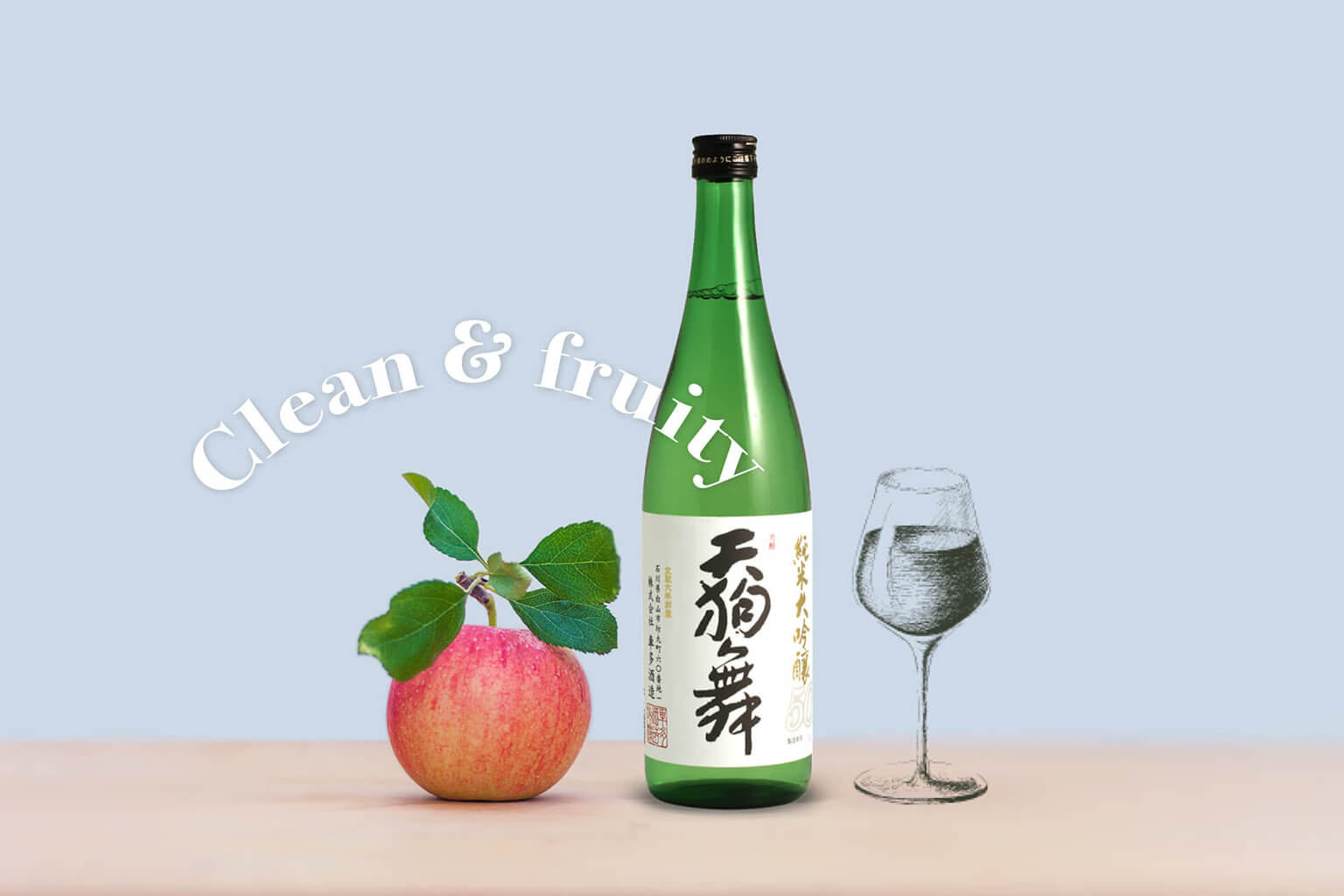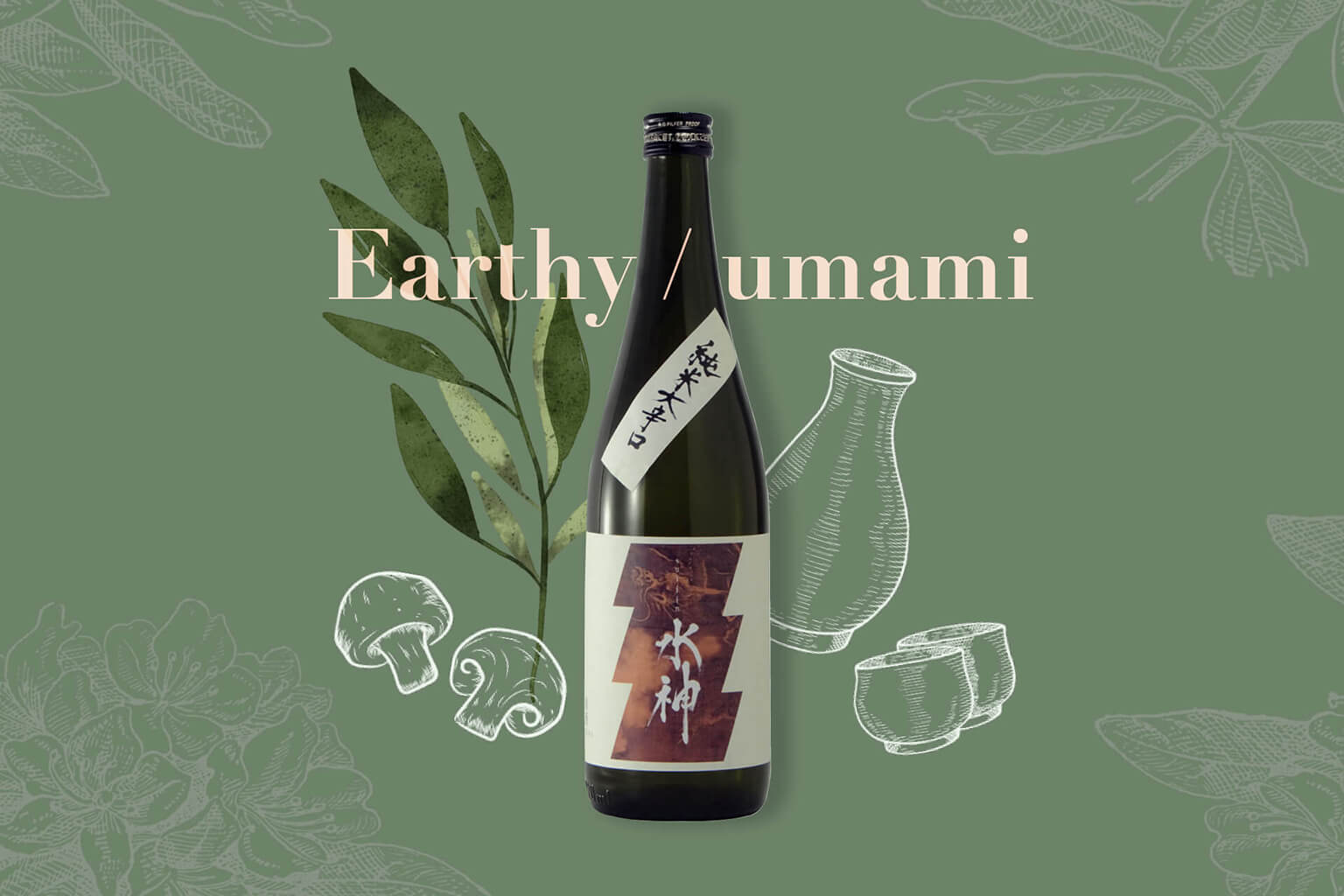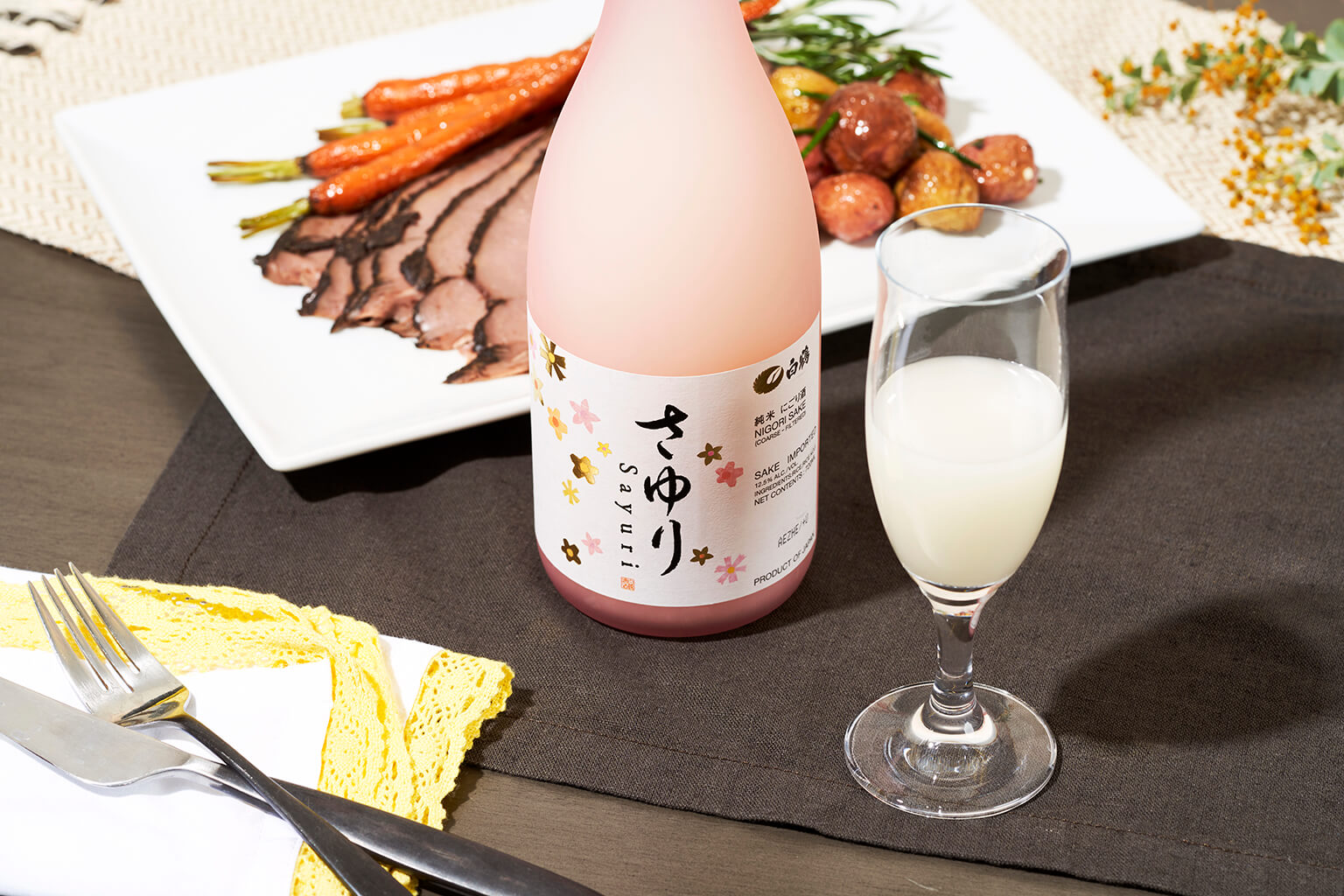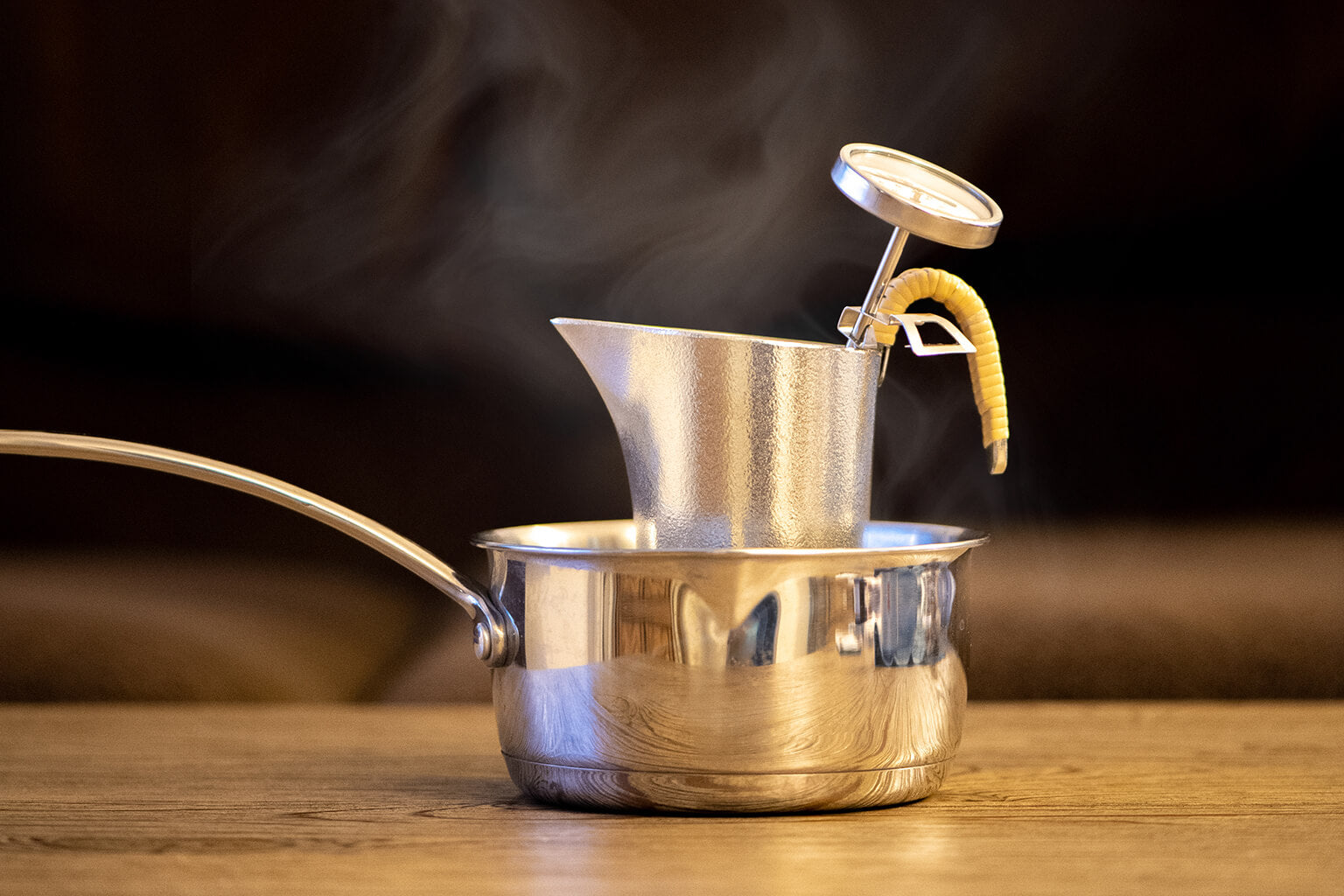Tippsy Sake Guide
Lesson 8: Best Bottles & Brands for Beginners
So you’re curious about sake and want to start your new adventure off on the right foot. With so many types of sake to choose from — junmai, ginjo, daiginjo, honjozo and dozens more — it can be difficult to know where to begin. Luckily, we at Tippsy are happy to share our knowledge with you. You can even take a taste quiz and have our sommelier make recommendations for you! Here are some tips on how to find the best sake to kick off your exciting journey with Japan’s national beverage.
Which sake type is best for beginners?
While there is no single best sake for beginners, the best place to start may be with some of our
bestselling bottles
to see what other customers enjoy. For example,
Hakutsuru “Sayuri,”
a nigori with tasting notes of strawberries and cream, is one of the most popular. So is
Dassai “45,”
a soft, clean junmai daiginjo with citrus and toasted hints.
The various types of sake will also be helpful to consider. Is it best to start with a junmai? A
daiginjo? There are delicious, easy-to-drink sake in almost every category, so there is no right
answer. If you’re still getting used to the terminology, think about which flavors you like most.
Clean and fruity

When discussing clean and fruity sake, daiginjo, junmai daiginjo, ginjo and junmai ginjo are usually the topic of conversation. These sake types are generally considered to be the most premium because brewers use highly polished rice to achieve lighter, more refined flavors.
Tengumai “50”
A hint of mint makes this fruity sake all the more refreshing. It’s somewhat dry with a beautiful brightness of flavor. This sake is best enjoyed chilled or at room temperature.
Earthy/umami

Earthy, robust, savory flavors are most often found in junmai sake. While those who enjoy delicate white wines may want to start with ginjo or daiginjo, people who love drinks with rich tasting profiles should start here.
Asabiraki “Suijin”
The maker of this sake has won gold awards dozens of times, so there is good reason for Asabiraki “Suijin” to be on your list of sake to try. This smooth junmai offers warm spice and mineral notes that are especially comforting when warmed.
Balanced
A balanced sake is a good bet for beginners who want to ease their way in by following the Goldilocks principle: not too fruity, not too bold, but just right!
Shichida “Junmai”
Shichida “Junmai” is packed with juicy fruit flavor, which is not always par for the course with junmai sake. On the other hand, it’s rich and full-bodied. This sake is pleasantly at the intersection of various styles.
Flavor infused
Those who can’t make it through happy hour without a sweet, fruity drink will love exploring our flavored sake collection, which includes “umeshu” (plum sake), yuzu sake and more.
Ichinokura “Himezen” Ume
This award-winning “genshu” (undiluted sake) from Miyagi prefecture is made from hand-picked, local yellow plums. It’s brimming with a bright, sweet, yet somewhat tart flavor.
Nigori

With its creamy mouthfeel, nigori sake tends to lean toward the sweeter side of the spectrum.
Kikumasamune “Kinushiro” Nigori
“Kinushiro” is a wonderfully balanced representation of this sake style. It’s packed with banana aroma and flavor along with a hint of green apple, but refrains from being too sweet. Even people who don’t usually consider themselves nigori drinkers can get on board with this one.
Sparkling
Many people are unaware that sparkling sake even exists, but if bubbly is your jam, then start here! Sparkling sake tends to be more fruity and not as dry as Champagne.
Shirakabegura “Mio”
Why not pop off with the world’s bestselling sparkling sake? Luscious flavors of grape and pear give “Mio” an almost thirst quenching quality that will have you on cloud nine.
Koshu

Are you the type of person who loves aged spirits? “Koshu” (aged sake) might be for you. Aging alcohol has the effect of strengthening, deepening and enriching its flavors, and that holds true for sake, too!
Yuho “Rhythm of the Centuries”
Thanks to the use of the labor-intensive kimoto brewing method, this koshu is rich and bold with both earthy and fruity notes. Four years of aging has both deepened and smoothed out the flavors.
What are the best sake brands for beginners?
Begin familiarizing yourself with various styles by exploring sake by brand. Each brewery takes its own approach based on things like personal philosophy and local ingredients, and experimenting with sake this way can help foster an understanding of regionality. Here are just a few of the best sake brands to start with, who make popular sake that many Tippsy customers love!
Hakkaisan Brewery Company

Courtesy of Hakkaisan Brewery Company.
Hakkaisan is one of
the more well-known names in sake. Based in Niigata prefecture, their product line exemplifies the
local style of refined, clean and dry sake, called “tanrei karakuchi.” This is due in large part to
the heavy snowfall that occurs there, which provides them with cold temperatures, clean air and
high-quality soft water.
Hakkaisan has many options available, most of which are very affordable. Try a range of styles, from
their smooth, aged
“Yukimuro”
to their fruity yet earthy
“Honjozo.”
Asahi Shuzo Co., Ltd. (Dassai)

Courtesy of Asahi Shuzo Co., Ltd. (Dassai).
The Dassai brand by
Asahi Shuzo Co., Ltd. is one of the most internationally famed sake brands. This highly acclaimed
brand from Yamaguchi prefecture focuses solely on producing junmai daiginjo. Many people begin their
sake journey with this brand’s elegant offerings. They told us so at
Dassai’s 2022 New York tasting party!
Do a Dassai sake tasting of your own at home with our
Dassai Set, which includes three different bottles.
Hakutsuru Brewing Company

Courtesy of Hakutsuru Brewing Company.
Like Hakkaisan,
Hakutsuru is a brand
that offers an array of options, including junmai, junmai ginjo, nigori and more! Make your way
through this popular sake brand for a delicious crash course in sake types. The brewery has been
operating in Nadagogo since 1743, and they’re still going strong.
Sip on bottles like
“Brewer’s Pride,”
a rice-forward “futsushu” (table sake), and their delightfully sweet yet slightly sour
“Plum Wine.”
Is it best to start with hot or cold sake?
One of the things that makes sake a uniquely versatile drink is that it can be enjoyed at a range of temperatures, from chilled to hot. So if you’re a first-timer, should you reach for hot or cold sake?
Ultimately, it’s a matter of preference. Making the transition from Western beverages that are served cold, like white wine, may be easiest with cold sake. However, drinkers who prefer full-bodied beverages might be better off warming up a robust junmai. The best way to learn about how sake temperature affects taste and what your personal preferences are is to try one sake many ways. Atago no Matsu “Tokubetsu Honjozo” and Otokoyama “Tokubetsu Junmai” are two well-loved examples of sake that can be served at practically any temperature.
Cold sake
Serving sake cold — below 59 F — gives it a sharper, crisper taste. By the same token, though, it can also enhance any underlying bitterness. Read one of our other Sake Guide lessons about how to serve sake at different temperatures for a more in-depth understanding, and check out our 10 Best Cold Sake blog post for more recommendations!
Gangi “Mizunowa”
“Mizunowa” is a “namachozo,” meaning it has only gone through one round of pasteurization prior to bottling. (The standard sake undergoes two rounds.) That gives this junmai ginjo a fresh taste, which awakens its fruity flavors. These are especially brisk-tasting when chilled.
Room temperature sake
There are benefits to drinking sake at this middle-of-the-road temperature (between 68 F and 95 F). Umami begins to be more noticeable in this temperature range without sacrificing the lighter flavors. This allows drinkers to get a sense of the dynamic quality of the sake.
Sohomare “Indigo”
There is a richness beneath this sake’s fruit flavors. Its nuttiness is not characteristic of most junmai ginjo, and this balanced flavor profile is perceptible when experienced at room temperature.
Warm sake

Photo by Studio Elepaio.
Even more umami and aroma can be coaxed from sake when served warm (at around 104 F). Warming can also mellow out some of the stronger flavors of more robust sake.
Mantensei “Star Filled Sky”
This junmai ginjo has been aged for two years to develop lovely flavors of honey and caramel. It balances sweet and savory flavors but isn’t overwhelmingly rich. Warming it up gives it a comforting quality.
Hot sake
While overheating sake — more than 131 F — can destroy its intended flavors, some bold-tasting sake are best enjoyed hot.
Suehiro “Densho” Yamahai Junmai
This junmai was made with the yamahai method, giving it a bigger flavor with a more pronounced acidity. This is tempered by plenty of umami from its ricey, earthy tones.
What’s the occasion?

Photo by @danielleperea.
There is a sake for every occasion, from daily dinners to large celebrations. There are no hard-and-fast rules here, but here are our picks for some of life’s joyful moments.
Celebration
Set Champagne aside and pick up a bottle of sparkling sake!
Hakkaisan “AWA” Clear Sparkling
Hakkaisan is one of the most popular sake brands. Prepared with the 2020 Tokyo Olympics in mind, “AWA” Clear Sparkling is a delightfully fruity sake with playful effervescence. It’s smooth with a light sweetness.
Family gathering
When sitting down with family, you’ll want to bring out a bottle that can appeal to a variety of palates and pair well with whatever food is on the table.
Suigei “Tokubetsu Junmai”
The brewery name translates to “Drunken Whale,” which recalls a Kochi prefecture warlord from the Edo period (1603-1868) who was a total glutton! This special junmai is a fantastic, reliable sake that compliments all types of dishes.
Date night
One of the easiest ways to impress your date is with a classy junmai daiginjo, the sake type that is brewed from the most highly polished rice. This category’s delicate, clean flavors are sure to please.
Nanbu Bijin “Shinpaku”
Fifty percent of the rice grain is milled away to reveal graceful notes of fruit and sweet rice. Its elegance lies in its clean simplicity.
What about price range?
There are several factors that affect sake price, such as the amount of rice used to make it. At Tippsy, customers can find sake of all prices, from under $20 to over $1,000. Check out our blog for more info on sake price and budget sake recommendations!
Budget sake
Your favorite sake might be one that doesn’t break the bank! There are countless bottles that will satisfy your taste buds as well as your wallet.
Eiko Fuji “10,000 Ways”
The combination of citrus, warm spice and toasted notes make this honjozo an absolute joy. It’s food friendly with a light sweetness, and can be enjoyed cold or warm.
High-end sake
Looking to make a statement? Many of the most refined sake are made with very highly polished rice, which requires more time and resources to accomplish, thus bumping up the cost.
Tatenokawa “18”
This luxurious junmai daiginjo has an 18% rice polishing ratio, which means that only 18% of the original rice grain remains. The result is an exquisite sake with fine fruit flavors and a touch of sweetness. Serve chilled.
Go find your favorite!
We’ve given you our recommendations and other tools you need to make informed choices about which sake you purchase. The rest is up to you, so have fun experimenting!
Resources
“Sake Adviser Certificate Course.” Sake School of America, 2020.
Sullivan, Timothy. “Sake Temperature.” UrbanSake.com, 2017.
https://www.urbansake.com/sake-101/sake-temperature/
